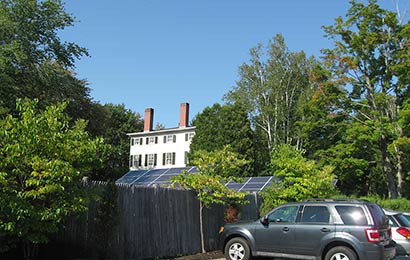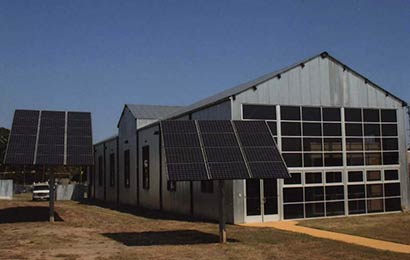THE SECRETARY OF THE
INTERIOR’S STANDARDS FOR
REHABILITATION &
ILLUSTRATED
GUIDELINES ON
SUSTAINABILITY
FOR REHABILITATING
HISTORIC BUILDINGS
Solar Technology
Recommended
Not Recommended
Considering on-site, solar technology only after implementing all appropriate treatments to improve energy efficiency of the building, which often have greater life-cycle cost benefit than on-site renewable energy.
Installing on-site, solar technology without first implementing all appropriate treatments to the building to improve its energy efficiency.
Analyzing whether solar technology can be used successfully and will benefit a historic building without compromising its character or the character of the site or the surrounding historic district.
Installing a solar device without first analyzing its potential benefit or whether it will negatively impact the character of the historic building or site or the surrounding historic district.
Installing a solar device in a compatible location on the site or on a non-historic building or addition where it will have minimal impact on the historic building and its site.
Placing a solar device in a highly-visible location where it will negatively impact the historic building and its site.
Installing a solar device on the historic building only after other locations have been investigated and determined infeasible.
Installing a solar device on the historic building without first considering other locations.
Installing a low-profile solar device on the historic building so that it is not visible or only minimally visible from the public right of way: for example, on a flat roof and set back to take advantage of a parapet or other roof feature to screen solar panels from view; or on a secondary slope of a roof, out of view from the public right of way.
Installing a solar device in a prominent location on the building where it will negatively impact its historic character.
Installing a solar device on the historic building in a manner that does not damage historic roofing material or negatively impact the building’s historic character and is reversible.
Installing a solar device on the historic building in a manner that damages historic roofing material or replaces it with an incompatible material and is not reversible.
Removing historic roof features to install solar panels.
Altering a historic, character-defining roof slope to install solar panels.
Installing solar devices that are not reversible.
Installing solar roof panels horizontally—flat or parallel to the roof—to reduce visibility.
Placing solar roof panels vertically where they are highly visible and will negatively impact the historic character of the building.
Investigating off-site, renewable energy options when installing on-site solar devices would negatively impact the historic character of the building or site.










